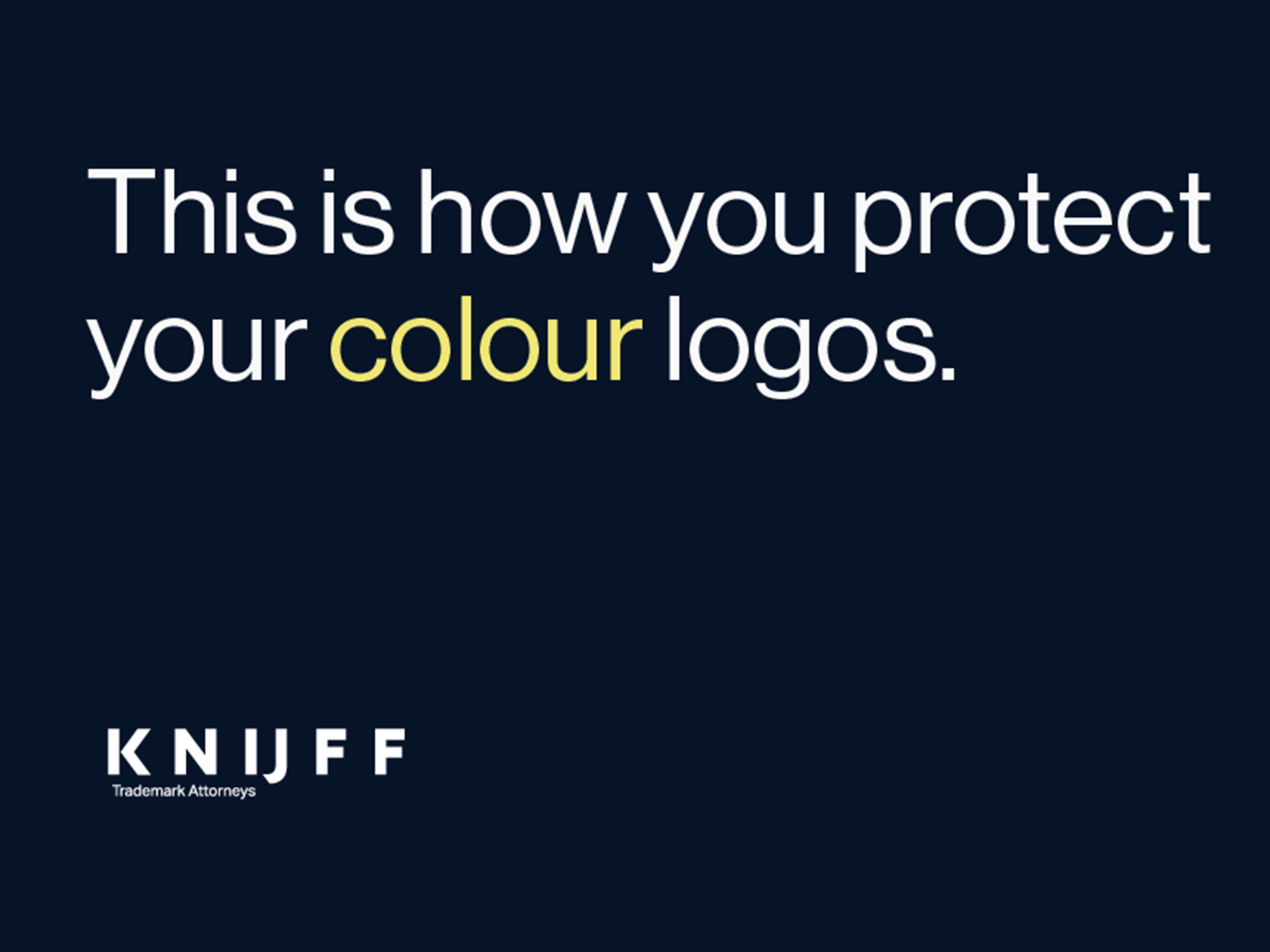
Trademark
registration
You will only be granted the exclusive right to a trademark if you register it in the trademarks register. It is crucial that you get this right so that you benefit from maximum protection.
So how do you go about it? Well, we will do it for you. We will sit down with you to discuss your timeframe, budget, and ambitions and then draw up a plan.
Protection strategy
Not every registration benefits you and your trademark. Making the right strategic choices is therefore crucial. Based on your ambitions and interests in a particular country or region, we will draw up a strategy. We will then manage the registration process and check all relevant details. Wherever in the world you operate, we know how to navigate the national registration procedures and understand the different rules that apply.
A trademark right gives you the exclusive rights to a particular trademark, company name, or logo. The trademark is also protected against any confusing trademarks. Trademarks are registered in the so-called trademark register. There are national trademark registers in most countries. Fortunately, there are also registration systems allowing you to register a single trademark across a number of countries, simply, quickly, and cost-efficiently.
Benelux
It’s smart to have your trademark registered in the Benelux. The Benelux countries (the Netherlands, Belgium and Luxembourg) are associated under a single trademark treaty. You cannot register a trademark in the Netherlands alone. Your trademark right will automatically cover all of the Benelux.
Once registered, your trademark must be maintained: legal and other changes may affect the validity of trademark registrations. To make sure that your trademark rights continue to apply, it is necessary to keep the details up-to-date.
We will maintain your trademark during the period of validity. If you so wish, we will renew it, keep you informed about relevant rules and regulations, and advise you on changes and developments. Does your market or product range change? Let us know. Are there any changes to the trademark itself, or to the proprietor’s details? This can all be relevant for maintaining your trademark rights. That is why it is important that we keep each other informed. We will also be happy to assist you in trademark conflicts or any other Intellectual Property issues.
Will you be using your trademark outside the Benelux too? Then make double sure it is protected there as well. There are a number of ways to register a trademark abroad. For instance, by means of a European trademark registration or through the International registration system. The route that works best for you depends on a number of factors, such as the relevant countries, budget, and planning. Together, we will draw up a step-by-step plan and advise you on the best strategy, costs, and procedures.
Global
How our clients register their trademarks?
Learn more about the trademark protection strategy of our clients, including the Municipality of Groningen, which came up with a new corporate identity, and the most famous Dutch snack bar FEBO, which deals with merchandising.
We help build and maintain well-known and lesser known trademarks for large and small companies across a wide range of industries.
This makes what we do dynamic and challenging. With years of experience under their belt, our attorneys have seen it all. Industry-specific parallel registers or legislation may complicate trademark protection. We have attorneys specialised in trademark protection in the pharmaceutical industry, clothing industry, start-ups, music and entertainment industries, in the agricultural and horticultural sectors and in Metaverse, Web3 and NFTs.
Get great advice
Annelies Hart //
Partner & Trademark Attorney
& more on trademark registration
find our brand thinktank //
find our brand thinktank //
The registration Q & A
-
Registration of a trademark may seem straightforward, but along the way you may find yourself facing some real hurdles. For instance, the Benelux Trademarks Office may send you office action about your trademark applications, you may receive an opposition, or the trademark may be refused by the trademark office. In that case, it is good to know you can rely on experienced trademark attorneys. If the trademarks are registered, you must also make sure that they are protected correctly. A simple typing error in the proprietor’s name or an incorrect or incomplete specification of products or services can have disastrous implications. And that’s exactly what you want to avoid when registering your trademark. It should come as no surprise therefore that an increasing number of registration procedures are being guided by qualified trademark attorneys.
Knijff is an expert in trademark registration thanks to its professional expertise and its many years of experience. We have been working for leading businesses for more than 25 years. At Knijff you can also count on personal attention and an attorney who actually listens to you. We will help you solve intricate questions and problems regarding your trademarks. With our can-do approach, we always look ahead.
-
Do you want to register a trademark? Then let Knijff register your trademark. This is how Knijff will apply for, and register your trademark:
1. First we search the availability of your company name or trademark. That means going through the commercial and trademark registers with a fine toothcomb. In the registers we look for potential objections, and scrutinise any obstacles. A check of the registers of the Chamber of Commerce is also important when registering trademarks.
2. We then give you a risk assessment and advice about whether or not you can use your company or trademark. We will also tell you what you can do to reduce or remove any risks.
3. We then advise you on the best registration of the name as a trademark. Important points to consider in this are your future ambitions and budget.
4. During the final step, we will register the trademark. This is crucial – without registration no trademark right. A trademark right gives you the sole right to particular name and protects against trademark infringements.
5. After registration we will stay in close contact with you to keep your trademark right up-to-date. This is important to maintain your trademark rights.
-
If we say trademark registration, the first thing that probably springs to mind is the registration of the name of a product, service, or company. Or the registration of a logo.
These are indeed the most common trademark registrations, but there are other possibilities too.
In addition to registering a name or logo, the following elements can also be registered:
Combinations of numbers and letters
Special fonts (for instance the italicised ‘e’ in Heineken)
Shapes of products or packaging (such as the design of a cola bottle)
Portraits
Sounds
Slogans
Colours
-
A legal requirement for the registration of a trademark is that it must be distinctive.
Descriptive trademarks cannot be registered. For instance, Euro Rent a Car, as a name for a car rental firm, is too general and therefore not distinctive enough. Also, a name may not be misleading as regards the products or services to which it applies. For instance, champagne can only be called champagne if it comes from the Champagne region. And last but not least, trademarks violating law and order are also refused.
The Benelux Trademarks Office does not refuse trademarks based on a pre-existing right to a trademark. If you were to register Nike for sneakers, it would simply be accepted.
Don’t be surprised if you get a cease and desist the very next day though. To prevent you accidentally infringing pre-existing trademark rights, it is important to search a trademark’s availability prior to registration. This will reveal any such risks early in the process.
Once you’ve registered your trademark, it is important that you stay alert for applications for the registration of similar trademarks. If that is the case, you must file an objection yourself. Watching can help in this.
-
The European trademark registration is an attractive option: it covers a large number of countries for a relatively low fee.
Advantages of a European trademark registration.
The European trademark registration currently covers 28 countries and new European member states are automatically added. The biggest advantage of the European trademark registration is that your trademark does not need to be used in every country to maintain your trademark right. Also, a trademark right blocks any counterfeit products being shipped from outside the European Union. Another benefit: the relatively low costs of a European trademark registration.
Seniority
The European trademark registration can also be used to include any existing national trademark registrations in Europe. This way, all trademark rights continue to apply, safeguarding old protection data. You no longer have to renew these trademark registrations separately. Naturally, this will save you a lot of money without affecting the trademark protection.
Disadvantages of a European trademark registration
Unfortunately, the European trademark right has some disadvantages. Objections may be filed from every country. A national trademark registration of a third party in Spain may present a problem, for instance. Since the European trademark registration is indivisible, this would cancel the entire trademark application. Annoying, but there are some alternatives in that case.
Finally, a European trademark must be used within five years from its registration. This requirement does not mean that you must use your trademark in every European country separately, but it is important to remember that a European trademark registration is not meant for regional use only.
-
Besides the Benelux and EU trademark registration systems, there is another system to register a trademark across several countries at once – the International trademark registration. Unlike the name might suggest, this system is not literally a worldwide trademark registration. It is a cost efficient procedure that provides trademark rights across the world in some other non-European countries.
The International system has both some advantages and disadvantages over the European trademark registration system. What would serve you and your trademark best, depends on many factors. We will be happy to discuss these with you.
Advantages of an International trademark registration
The International registration system combines a large number of countries. It enables the registration of a trademark across several countries at once. This is very cost-efficient. Affiliated countries are found all over the world, and include the United States and Japan, but also the European Union. Other countries may also join the system. An important advantage of this system is that a problem in a particular country does not affect another country involved in that registration.
Disadvantages of an International trademark registration
International trademark registration is possible only following a basic registration in one of the affiliated countries. For Dutch companies this is most likely to be a Benelux trademark registration. For the first five years, the International trademark registration then relies on the Benelux trademark registration. If anything affects the Benelux registration during that period, it could also affect the International trademark registration. Also, some trademark offices (even European ones) could refuse trademark registrations if the trademark applied for resembles a pre-existing trademark.
-
You see them all the time, but what do they actually mean?
TM
TM is short for trademark and the symbol is generally used for trademarks that have not yet been registered, but where an application for registration has been filed.
®
As soon as a trademark has been registered, the ® symbol is used. It stands for “registered trademark”.
©
The © symbol means ‘copyright’ and is used to indicate a copyright to the work.
The use of these symbols has not been standardised. For instance, their use is obligatory in some countries including the United States, but not in the Benelux. Still, the use of the ® symbol can help to prevent trademark infringements as it clearly refers to a particular form of protection. Their use is also subject to restrictions. The use of an ® , for instance, could be regarded as misleading if the trademark has not been registered.
-
A trademark registration doubles as protection of your trademark name or logo, and an exclusive right to its use. But there are restrictions. Firstly, a trademark registration is valid for ten years. The trademark’s proprietor must use the trademark within five years after registration. Only then can the proprietor rely on the trademark rights.
Not every use is suitable for this purpose. For one, “symbolic” use is not sufficient. Instead, a trademark’s use must be aimed at obtaining or retaining a market share, where the circumstances (the sector, or the products in question) play a role in assessing whether or not a trademark has been used in a legally valid manner.
The obligation to use applies to all trademark proprietors. It will play a role if a proprietor is involved in a dispute and the other party asks for proof of use. To be prepared for situations like these, we advise you to retain all invoices, brochures, advertisements, etc.
We know from experience that it may be difficult to produce proof of use for previous years in disputes where deadlines are tight.







